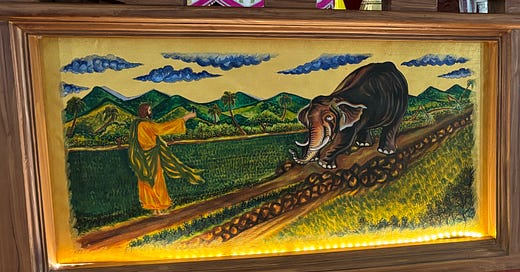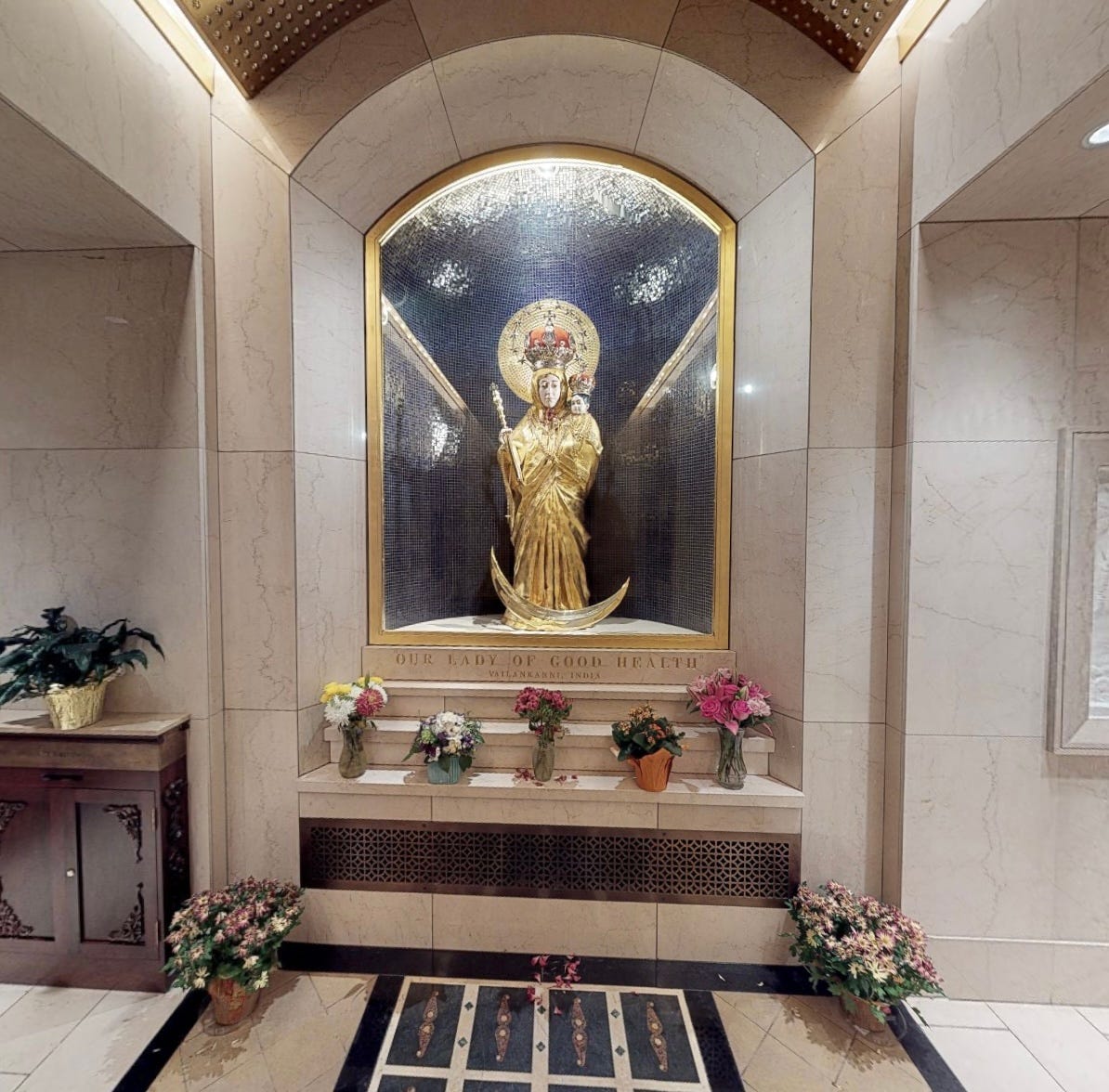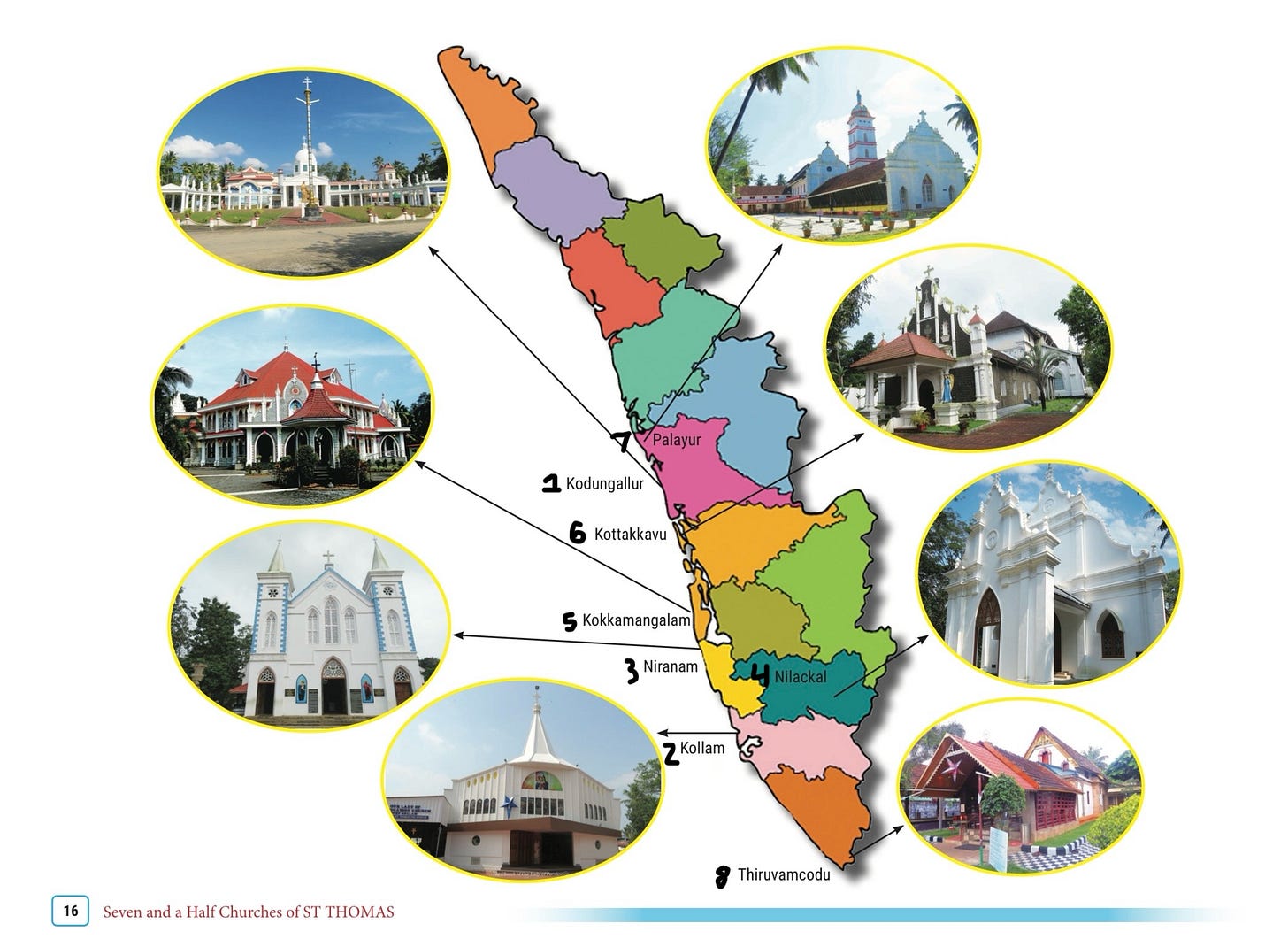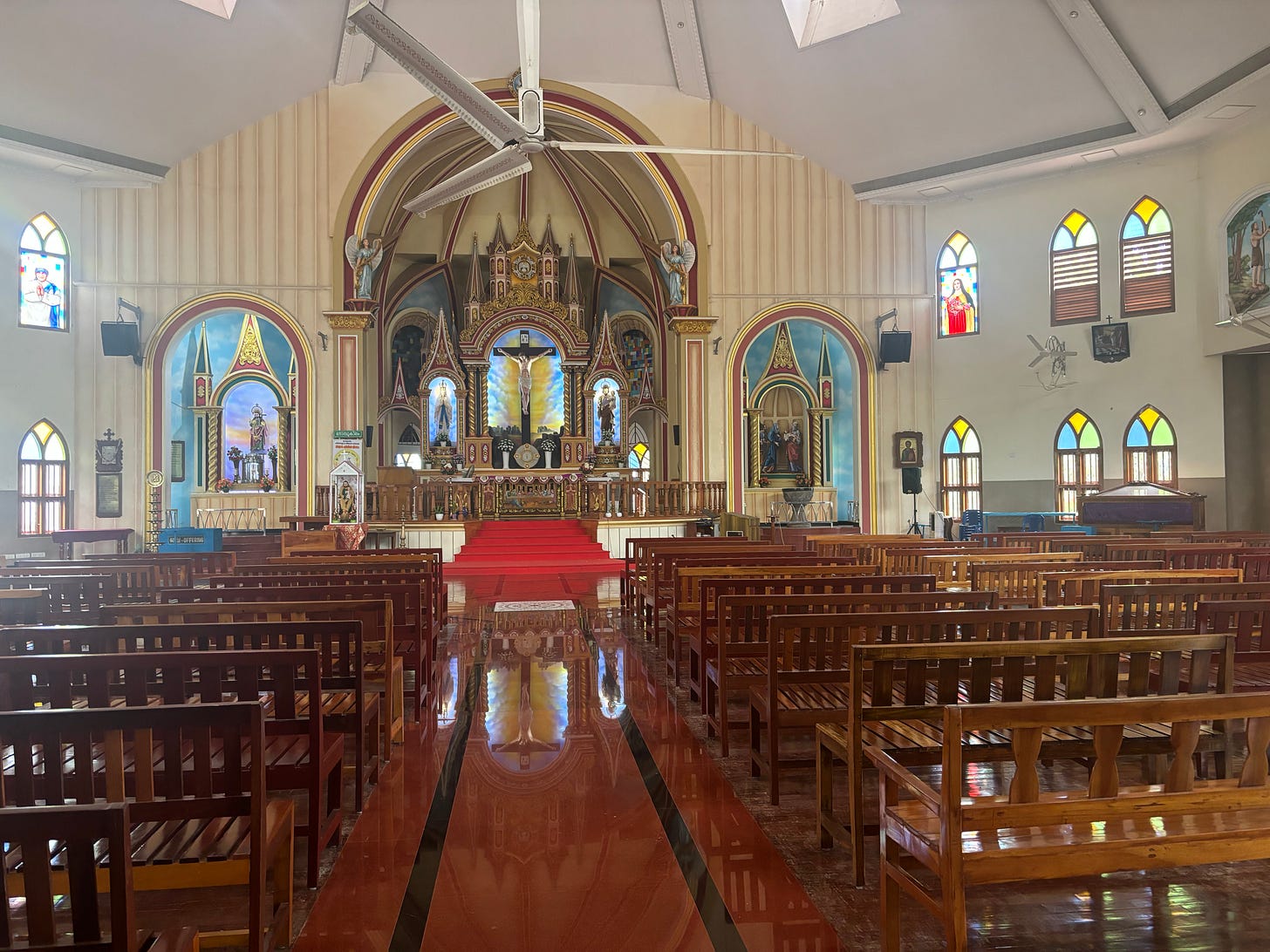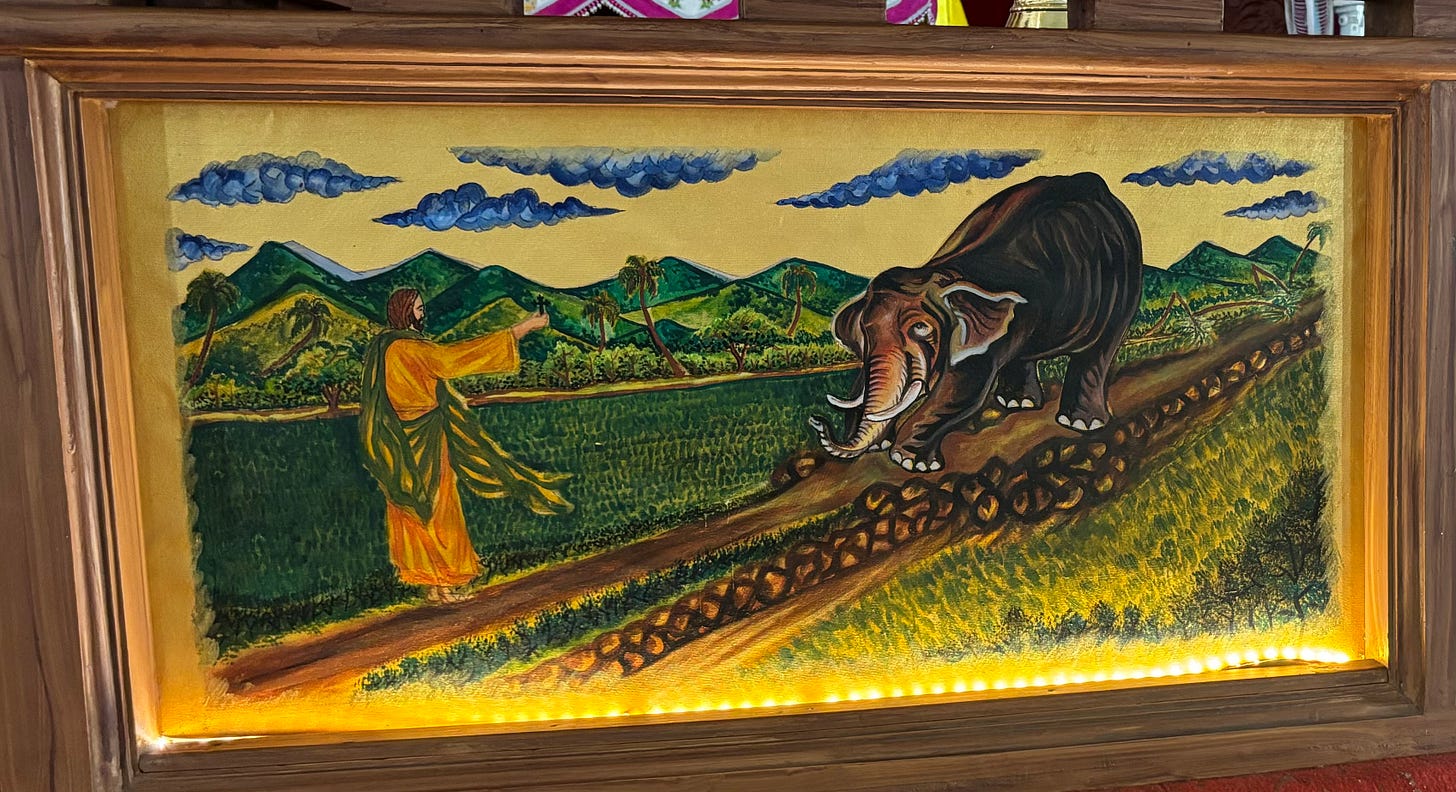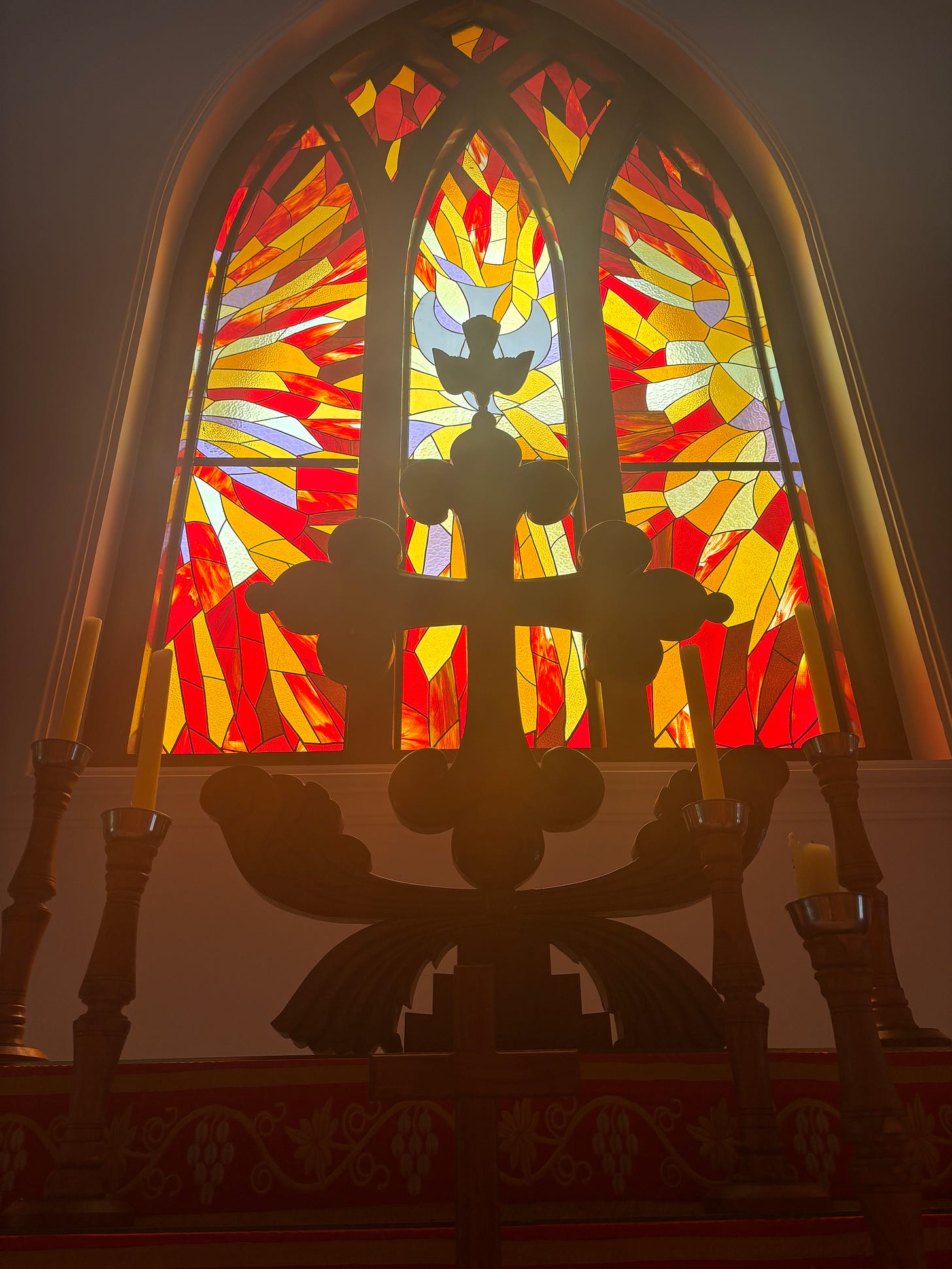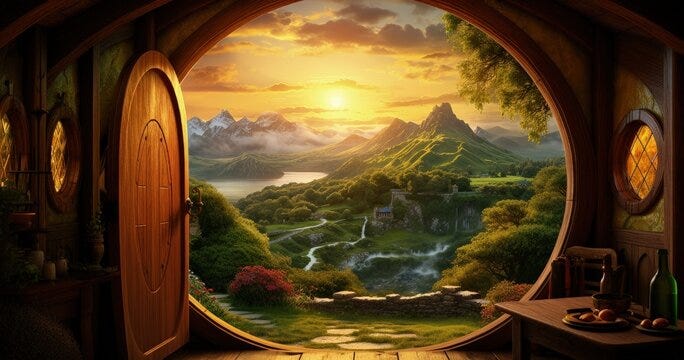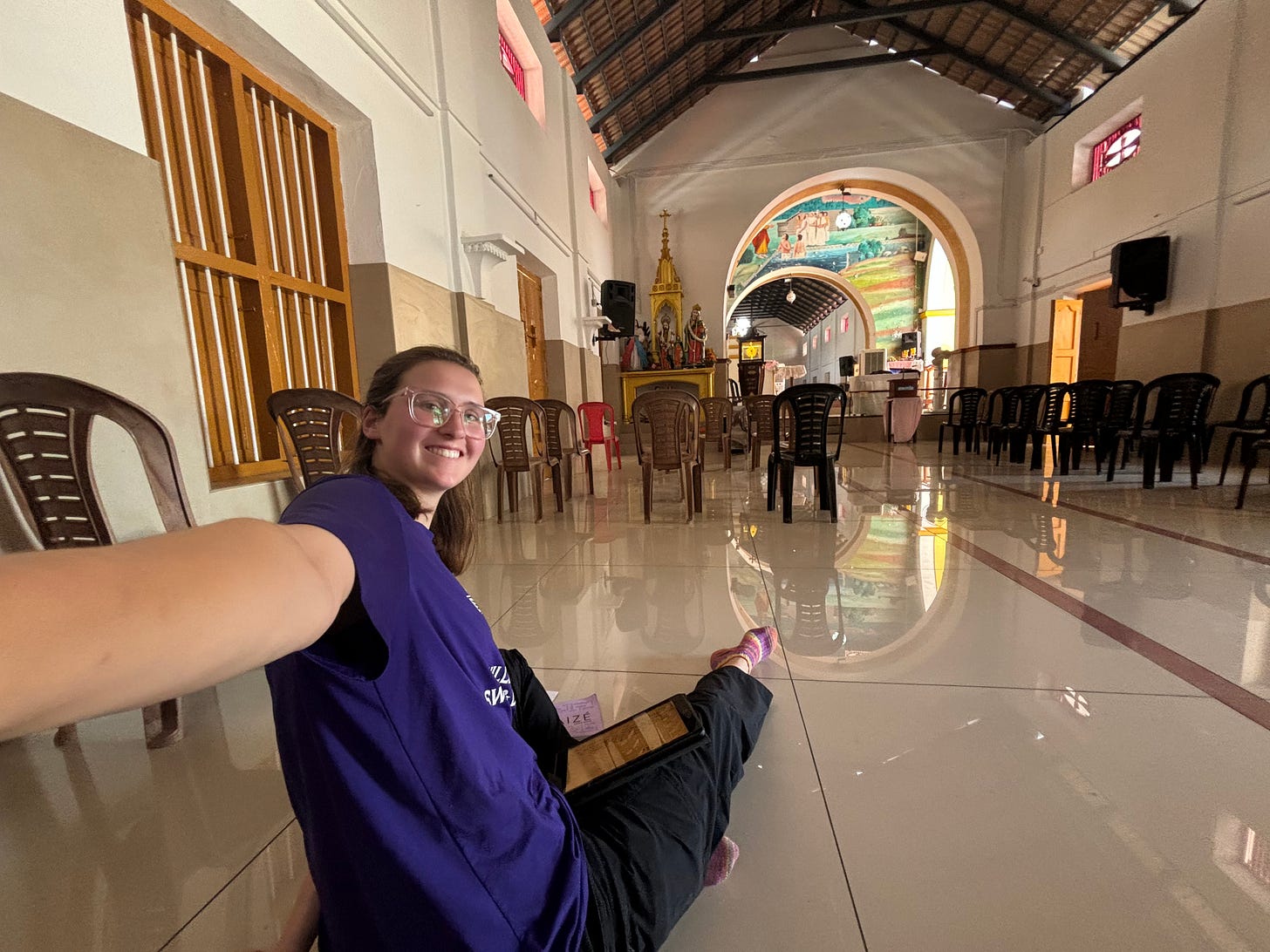A long-delayed and meditated Hello! And update! I am writing to you from…. Eastern Europe, a plane!:
It’s been a while since I arrived in Eastern Europe, but three weeks ago I wrote down my immediate first impressions upon arrival:
There are so many people walking, and walking SO FAST.
People are following the traffic laws! Don’t they know it’s slower that way?
And if you’re standing in the general vicinity of a crosswalk the cars stop to wait for you to cross. I forgot they could do that.
The air is deliciously cool and biting. I miss cold weather. I’m not sure if you picked up on that yet.
I feel much less safe being out at night here than in Vietnam or Taiwan.
This email is quite delayed. But fear not, that transgression will be made up for with an exceptionally quick succession of emails. The next two are already ready - they are quite good; I can say that because I hired some guest writers:)- guess who! Keep a look out for them.
_____
This email is about my final week in India (a month ago), and much more. It’s a bit long, but hopefully you can bear with me.
During my last week in India I decided to hire a driver and visit the Seven and a Half Churches of St. Thomas the Apostle in Kerala (Southern India). Also known as Ezharapallikal. (If you ever go to Southern India and want to hire a driver I can put you in touch with mine! He was very kind).
When I think back to when this idea actually started I get a little time whiplash. Last April 2024 I was in DC for a retreat with a bunch of other Catholic seniors from around the country. One day we went to the Basilica of the National Shrine of the Immaculate Conception, which is filled with chapels and shrines that commemorate, commend, and represent the Catholic faith from around the world. One included section was the Our Lady of Vailankanni Oratory (donated by the Indian American Catholic Association), which is named after the Shrine of Our Lady of Good Health in Vailankanni, India. Three miracles occurred in the 16th century which spurred devotion to Our Lady of Vailankanni and the creation of the Shrine. On the wall of the Oratory there was a description of their devotion to Mary that started with “Christianity has flourished in India since its introduction by Saint Thomas the Apostle, in 52 AD…”.
St. Thomas went to India? Huh, I had no idea. I really haven’t thought much about the lives of the apostles post-Christ except when it has stared me in the face, like at St. Peter’s Basilica in Rome or while walking the Camino de Santiago in Spain.
Our visit to this shrine could not have been better timed. The day before I had received a call from the Williams Fellowship office to offer me the Chandler fellowship. When I walked through the Basilica with the faith of all these countries represented, I was able to take inspiration from what I saw. My mind was alive with ideas and excitement that accepting the offer meant this dream could be a reality. When I learned of St. Thomas’ connection to the Indian church at the Our Lady of Vailankanni Oratory, I was able for the first time to not only imagine, but plan on going to investigate that history in person. I remember staying there a little extra long in wonder and gratitude for the fact that I might actually go to Vailankanni, or live with those practicing Syriac rites that stem from St Thomas’ time there.
In the end, I didn’t go to Vailankanni (I was close, and my host family in Tamil Nadu go once a year - they showed me lots of pictures), but I did go to church in both the Syriac rites. Furthermore, I had the privilege of spending time with a priest who did research on the seven churches established by St. Thomas in India, and he shared his work with me while in Delhi.
As a result, I decided to make the pilgrimage to these Seven and a half churches. St. Thomas was one of Jesus’ twelve disciples and is famous for not being present when Jesus appeared to the other apostles in the upper room after he was raised from the dead. More specifically he is famous for doubting the other apostles when they tell him the story afterwards, saying “Unless I see the nail marks in his hands and put my finger where the nails were, and put my hand into his side, I will not believe.” Eight days later Jesus appears again, he gets his wish and comes to believe. But he had already earned the nickname Doubting Thomas. (John 20:19-29)
I didn’t delve too deeply into the evidence surrounding St. Thomas’ visit to India, but here’s a brief overview of what I’ve learned: the apocryphal Acts of St. Thomas give a historical account of his time in Northern India, Christian historian Eusebius notes that a saint who visited India in A.D. 170s/80s found Christian communities already present and using the the Gospel of Matthew in Hebrew, and poet St. Ephraem from A.D. 300s writes about the traditional belief of St. Thomas being the founder in his hymns, and there’s more! If you know of more evidence or can dispute this, feel free to communicate with me about it!
For me though, it wasn’t so important to verify his presence here. The experience was intended to be imaginative and contemplative anyway. I wanted to separate myself from the intellectual faith approach and stay more emotional.
______
Here’s a map and a bit more background about the churches:
The 7.5 churches are, in the order St. Thomas founded them and with information from my priest-friend’s book Seven and a Half Churches of ST THOMAS by John Chathanatt, SJ, as follows:
Kodungallur - The Marthoma Pontifical Shrine (Catholic), is meant to be at the place St. Thomas landed in Kerala. It has a relic of St. Thomas’ elbow. A priest was performing a Malankara rite mass for one man when I arrived. I stayed for the remainder of the mass and a little after.
Kollam - The Church of Our Lady of Purification (Catholic). Kollam is the hub of cashew trade in India! (I had some -delicious). The church is meant to stand on the same ground where the original church was established. This church was empty when I visited save one local who continually did services for me (turn the light on, ring bells) to receive money.
Niranam - St. Mary’s Orthodox Syrian Church. St. Thomas is said to have performed many miracles here. There is also a small museum telling the story of the golden cross at the front of the church. Church service had just started when I arrived.
Nilackal - St. Thomas Ecumenical Church. This church is a 30-minute drive into a dense forest (my driver saw elephant droppings!). The location is so dangerous people no longer live in the area, having moved out in the 6th century to escape the wild animals. This church was empty when I visited with the exception of one quick stop in. There is a retreat center next door - I think it would be an EPIC place for a retreat.
Kokkamangalam - St. Thomas Church (Catholic). A relic and a miraculous picture are stored here, as well as a replica of a cross that St. Thomas planted on a bank multiple times. The base of the cross has images of the other six churches carved on it. Three tour groups came in and prayed while I was there.
Kottakkavu - St. Thomas Church at Kottakkavu (Catholic). This church has multiple chapels, with one being the many times reconstructed old church. There is also a pond with statues commemorating St. Thomas baptizing the people. There was also a walk-through statue museum depicting the attack of the Tippu Sultan in the 18th century (I think?). Multiple individuals were here praying. This church was clearly in constant use.
Palayur - St. Thomas Church (Catholic). Palayur was a Jewish settlement (many of these places might have been) where St. Thomas came to evangelize. When nearby Hindus left the region the Christian community expanded. This place also had a BIG pond and a grotto. Construction was going on in the main hall of the church, and a tour group came through while I sat in the side wing.
Thiruvamcodu - The Half church. St. Mary’s Church (Malankara Orthodox Syrian Church). It has three main parts built in the 17th century and is claimed to be the world’s oldest church that still has daily prayers. This does not seem to be a widely accepted claim, but it’s what they say. The stones on the bottom layer are very large and are apparently very ancient. Inside there is a cross carved in the stone that says “the cross carved by St. Thomas”. I went here with my host family, but they were doing construction, so the inside was empty. It is a tiny little church!
I did not visit them in the order that St. Thomas founded them. I made my way north from Trivandrum to Palayoor (8, 2, 4, 3, 5, 6, 1, 7).
__________
Some Initial Reactions:
After traversing and visiting some of the most ancient sites in the world (e.g. Vatican, Corinth), I needed to adjust my expectations about what these places would look like. St. Thomas did not build physical churches in Southern India. He established communities that turned into the Christian and Catholic Churches throughout India. The physical churches I visited were built much much later (some as early as the 1000s I believe, but all being continuously rebuilt, and most being as new as the second half of the 1900s and even early 2000s). I was forced to rely more heavily on my imagination and Ignatian spirituality exercises when imagining what life was like when St. Thomas was actually here.
It also surprised me that the churches were quite empty. I happened to LOVE this because it gave me more freedom in my prayer, specifically that it allowed me to sing Taize prayers aloud. I did expect the route to be more popular and commercialized. Some churches didn’t even have websites and it was difficult to confirm when the doors would be open.
_______
So what was I thinking about?
______
Well, doubt.
I was visiting the churches of Saint Thomas, and he's most famous for his doubt, so naturally that's where my thoughts lay. Luckily, I had the perfect song to encourage my reflection and serve as this week's anthem. Four years ago a friend shared the song Doubting Thomas by Nickel Creek with me. The song, pleasing to the ear, to me, is characterized by the genuine earnestness I feel from the singers. The singers relate their doubts about the truth and their conduct to St. Thomas. There’s both a desire for confident faith and a touch of dejectedness at the idea of facing death and not knowing what will happen to you. The song resonates deeply with me; I listened to it in silence at each church while looking at the many depictions of St. Thomas around: St Thomas sticking his finger in Jesus’ side, St Thomas baptizing the faithful, St. Thomas holding a carpenter’s square, St. Thomas holding up a finger capped in blood.
The song’s resonance can probably be attributed to my own struggles with doubt. I’ve been struggling with doubts about my faith for longer than I’d like to admit.
________
That I would be struggling with doubt this year specifically wasn’t entirely unexpected. In fact, the possibility that my worldview and faith could be shaken was an essential component of my application to the Watson/Chandler Fellowship. The premise of the fellowship is that your project should be both intimate to your person, and challenging. So I argued that my project, on the role of women in the Universal Catholic Church, was intimate to me as a catholic woman looking for her place, and challenging because it evaluates the reality of the Universal church (and the church’s current teachings on women). If I truly evaluate these two things, I could come out with a negative assessment, endangering my faith in the Catholic Church.
On the topic of Universality, my baseline position is that I love the idea of a universal church because I like that the church is teaching to humans, and her teachings get at how to grow the soul that we all have no matter our cultural contexts. It’s a warmly connecting thought. But the universality of church teachings is also one of its least practical aspects. How can someone who grows up in Kibera in Kenya understand and agree to all the same teachings, life values, and behaviors that I do in the United States? Not only is our socio-economic context different, but our local cultures present drastically different secular values. I doubt how we can truly be one church fairly with these differences.
The Dean of the conclave gives a homily at the beginning of Conclave (2024 film) which includes a passage speaking exactly to this idea of diversity in the universal church:
“And speaking to the Ephesians, who were of course a mixture of Jews and Gentiles, Paul reminds us that God’s gift to the church… is its variety. It is this variety, this diversity of people and views which gives our church its strength. And over the course of many years in the service of our Mother the Church, let me tell you, there is one sin, which I have come to fear above all others. Certainty. Certainty is the great enemy of unity.”
Basically, I think the homily states my own feelings more eloquently than I could, though it doesn’t address my doubt about how we remain one church with those differences. He simply says uncertainty can be productive when learning from our diversity, and we can’t assume to know all the right answers from our individual experiences. And I agree that this type of doubt is good.
______
In fact, I’ve traditionally felt that doubt is usually eventually good. Some years ago a friend of mine joined the Catholic Church. I asked how he was feeling a couple days after he received the sacraments; he responded that perhaps he had more doubts than before, or at the very least they weren’t magically going away. I replied that I felt doubts could only lead you to a stronger faith because a doubt might be a step back, but resolving those doubts would let you take three steps forward. In my project, my doubt leaves me open to searching for and receiving the truth, even if it looks different than I thought it did before.
But my current doubts go beyond my project, and these doubts aren’t just some questions and things I feel iffy about. They’re all the big existential doubts that people have been having for thousands of years. They endanger not only my belonging to the Catholic Church but the Christian faith at all. And that feels different and certainly less helpful or productive.
Perhaps I can take comfort in their normalcy?
______
I took some time during the week to read about those people over the thousands of years who have dared to express their doubts in Jennifer Hecht’s book Doubt. Sure enough, Epicurus doubted whether the Gods cared about what humans did or prayed for in the 300s BC, Siddhartha Gautama had doubts about the nature of suffering and if it could be avoided, and the founders of Charvaka philosophy doubted the existence of anything immaterial such as God or the soul. While I didn’t finish that book (it was LONG), it caused me to consider the magnitude of these questions I have. Humans in all the various walks and circumstances of life that have shown up over these thousands of years have kept wondering about their creation, a creator, the existence of suffering, the meaning of life, and their purpose- just like I am now, and as I guess many of you have done at some point too.
Of course, some believe these questions have been answered and there is something of a guidebook on how to live a meaningful and fulfilled life. One of the things I love about being Catholic is just that - the guidebook. There’s no exact path, but my faith does give me goals, standards, and values that typically guide me to activities and behaviors that I find fulfilling. But I’ve been struggling with an emptiness and an utterly confusing mix of debilitating empathy and occasional inexplicable apathy that have compelled me to re-evaluate my foundations.
________
For example, more than ever before, current wars and natural disasters have contributed to my shakiness in faith. Classically, and as many others have done for forever, I wonder how this all can be happening with the omnipotent, ever-loving God I believe in. Consider this my plea for your best answer (affirmative or negative) to that question in the form of a personal response, book or talk recommendation.
Another reason I’ve been experiencing a lot of doubt is that I feel too privileged to think I know anything about life. Somehow because my life is blessed, it discredits it as a life reflective of reality. I have two loving parents, my sisters are amazing people who encourage and love me. I have good friends who push me to be a better person. I’ve never experienced hunger or extreme illness. I even got to go to Williams College, which allowed me to study a language as my degree, indulge in my thirst for knowledge in any and all subjects, volunteer for a summer without going broke, fly to England and study at one of the most historic universities in the world, and now travel doing something I dreamed up when someone said: if someone gave you money to travel and you could do anything in the world, what would you do? My family has a dog! Not only do I have enough clothes, I have yellow clothes. I get to look at the stars and see the sunrise in unpolluted areas of the world. What could I possibly know about hardship? My issues, though overwhelming at times, can’t be compared to real suffering or at least don’t number enough to amount to anything…so how can my understanding of the world be informed enough to assert that there is a God? Isn’t the fact that I see Good in the world as evidence of God undermined by my easy life? I doubt my ability to fairly reason about my existence.
More confusingly, I have these doubts because of experiences that compelled me to feel guilty for this privileged life, but these same experiences should also be uniquely suited to debunk that doubt. I’m nine months into meeting people from around the globe in varying positions of privilege and lack who all believe in God. I have friends who grew up in poverty, who don’t have access to running water, who were raped at a young age, who are on the verge of death, who work or live in informal settlements, and who live isolated lives.
They have suffered, and yet all are full of faith. This is encouraging, though not confirmation in itself; in every place, some people do not believe.
_____
That’s the background, but there have been a few developments in this shaking of faith.
#1 I realized I want to believe. I like being Catholic. I like the idea of God as described in the faith. I like the way thatreligion gives structure, meditation, and community to my daily life. Desire does not equate to belief, or constitute enough evidence that I should believe, but it feels good to know I want it.
#2 I’ve not found any alternative worldviews that I think are accurate. I certainly have not tried them all, nor had enough time to thoroughly investigate everything out there (does anyone live long enough?), but such is my current situation.
#3 Though still not common, in the past couple of months there’s been a definitive increase in the number of times I’ve naturally thought “Ooooh I see what God did there”.
______
At the point in my faith journey where I realized I had a desire to believe, I was finding the intellectual routes I tried interesting but not inherently helpful.; so I decided to go back to the basics. One might think that means the gospel, but no. It meant C.S. Lewis and J.R.R. Tolkien. I reread some of my favorite works by these two authors during the month I was in India. C.S. Lewis’ astute observations of man’s behavior in Screwtape match so well with my experiences that it is necessary to weigh its origins. And Tolkien’s exploration of light and darkness, good and evil, adventure and determination, resonated with me in a new way now I’m on my own traveling adventure. What comes to light as valuable in Lord of the Rings (relationship, stability, nature’s beauty, challenge, loyalty, resolve, and purpose) continually reflects my own experience this year, though I’m on no life-threatening quest.
Not to mention, a huge theme in all works I read by these authors was doubt itself: the hobbits doubt what the future will hold and often if they even have anything to offer the world, Sam and Frodo doubt whether their task is possible, the man discussed in Screwtape doubts the merits of certain virtues. None of these doubts were the end of their story though. That’s just like St. Thomas, who has likely the most well-known, most analyzed, most used -as-an-example-of-what-not-to-do story of doubt in history. And it turns out that yeah he did doubt, but then used the rest of his life to proclaim the gospel in more and much further lands than any of the other apostles. Wherever this doubt of mine leads, I hope that it’s simply a node in a much more extraordinary story.
_____
If you ask me right now about my beliefs, I will tell you I am Catholic. I still fundamentally believe in the creator because I believe that Good (capital G, two os) exists and that Good came from somewhere. Concurrently though, if you are a believer, I will want to argue with you about how you could possibly know this truth. I will want to ask you how the world can be as it is, with wars and disasters. I will want to know if you can defend the persistence of poverty and suffering. I will want to know if you can explain the meaning of my life and what I’m supposed to do with it. I feel like I’m standing in the middle ground between two chasms, worried about what my doubt means for my relationships with people on either side.
_____
For now, I take hope in the recently released autobiography of Pope Francis that having doubt is not only normal but potentially essential. Though I haven’t read it myself yet, I stumbled on this quote: “It is no good a person saying with total certainty that they have met God, … If someone has answers to all the questions, this is proof that God is not with them…The great guides of God’s people, like Moses, always left space for doubt.” This assertion seems more general than the one coming from the conclave homily, maybe it can cover my current big doubts too?
I’m a typical impatient young adult: clearly, I have a lot of uncertainty about my future. I have few concrete plans or designs, but still have a desire to do lovely things. And I want to know how I am going to do them, like right now. My current doubts certainly don’t help with planning. So I feel a bit like I’m standing on the edge of a precipice, or maybe in a dark tunnel like Bilbo before going to Smaug’s lair. Of which Tolkien writes:
“It was at this point that Bilbo stopped. Going on from there was the bravest thing he ever did. The tremendous things that happened afterward were as nothing compared to it. He fought the real battle in the tunnel alone, before he ever saw the vast danger that lay in wait.” J.R.R. Tolkien, The Hobbit.
Maybe, like Bilbo, the best thing I will do is embrace the uncertainty now and keep going full force ahead.
Though I won’t mind if God makes my tunnel a little longer, for while I know I will go through to the end like Bilbo, I don’t yet know what I’ll do when I get there. So like St. Thomas and Nickel Creek, I ask God to “please give me time to decipher the signs, please forgive me for time that I’ve wasted.”
Love,
Lillian

